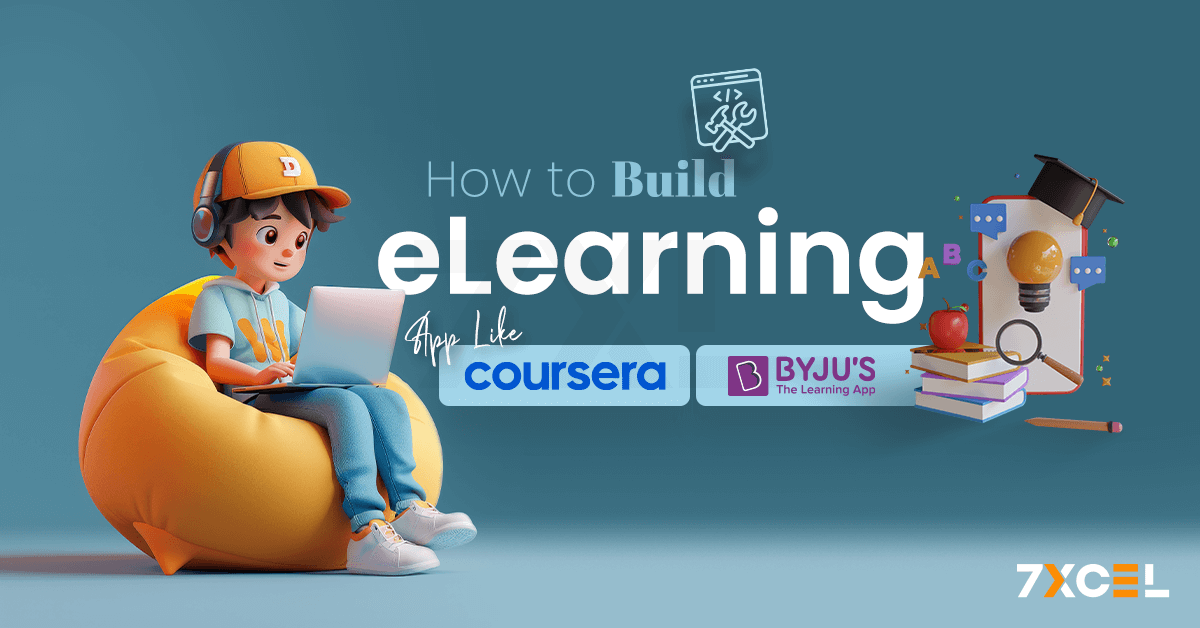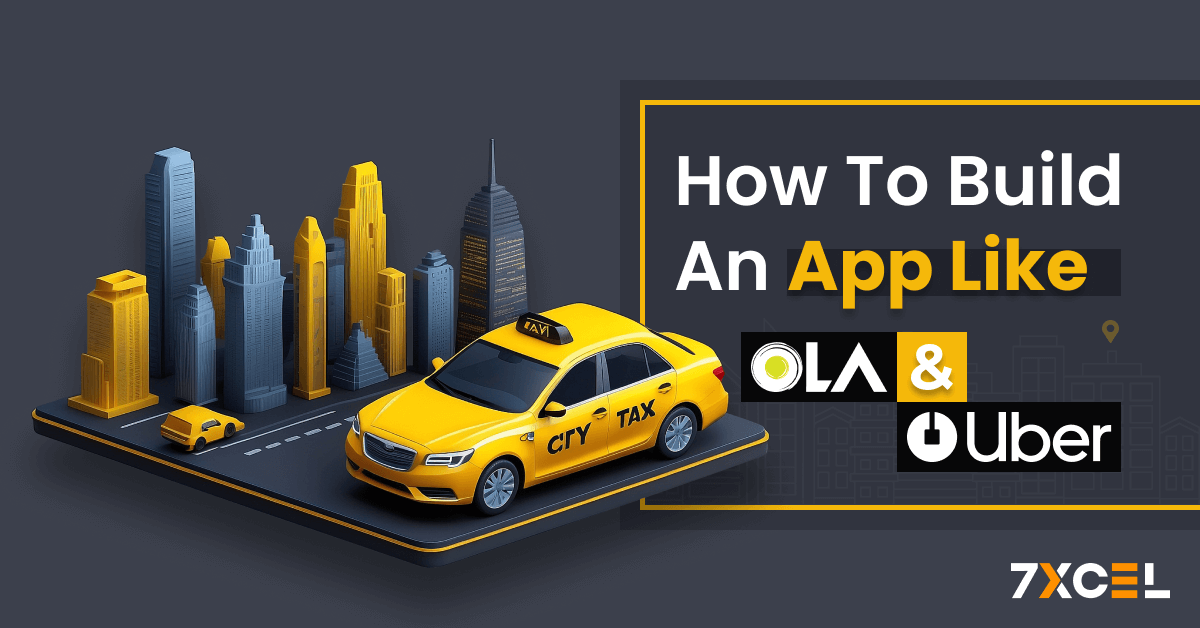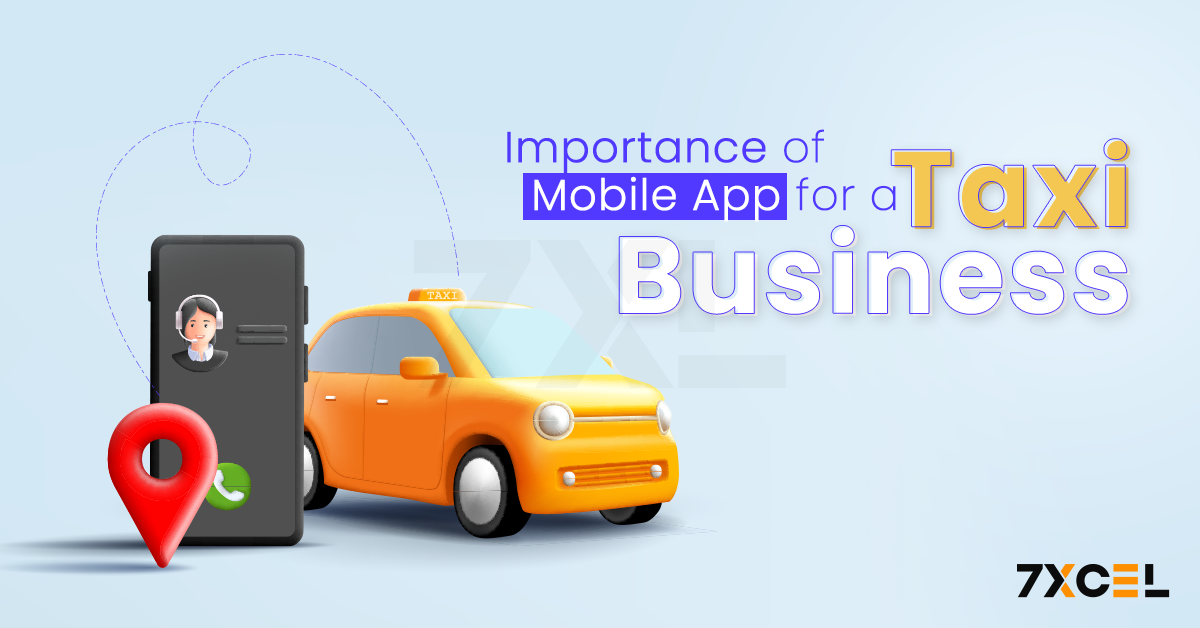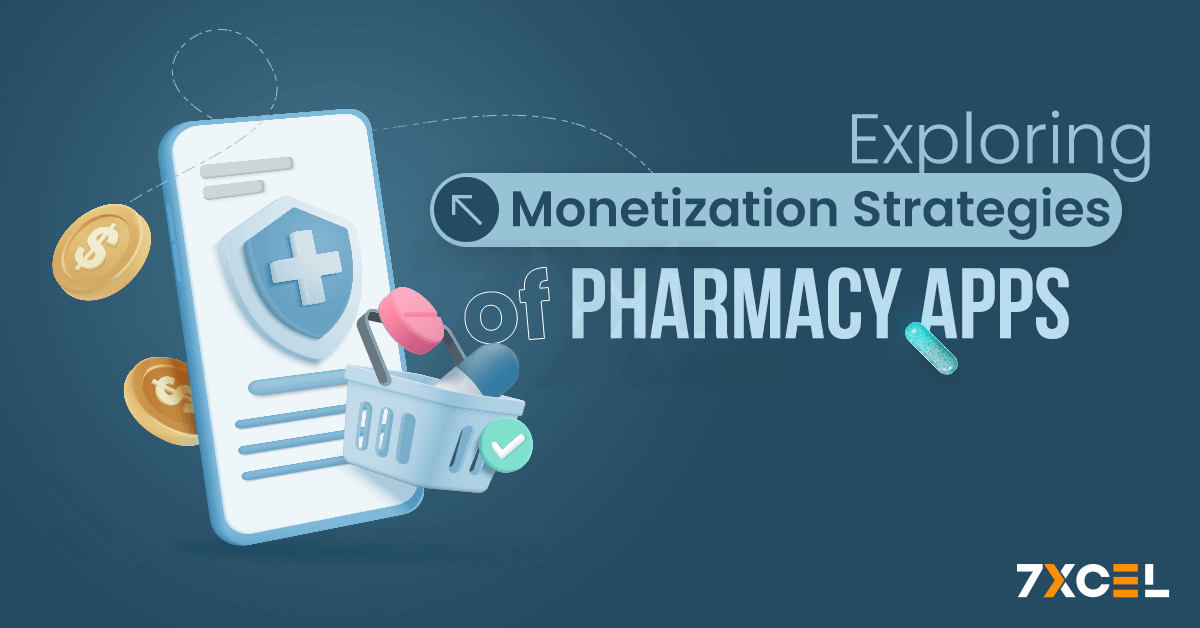Quick Summary:
To build a successful eLearning app like Coursera or Byju’s, focus on thorough market research, creating a user-friendly design, choosing the right technology stack, and offering engaging content. Incorporate advanced features, ensure strong security measures, and plan effective marketing strategies. Continuous updates and improvements are essential to keep the platform competitive and appealing to users.
In knowledge driven world, eLearning has emerged as a powerful tool for education, breaking geographical barriers and making learning accessible to everyone. The rise of eLearning platforms like Coursera and Byju’s has revolutionized learning, making high-quality education accessible to anyone with an internet connection.
But for aspiring entrepreneurs, a question arises: how do you build an eLearning app that rivals these giants? You can follow along with the necessary steps by following this instructions. But before diving into the essential steps lets first understand the market and then move forward from there.
The EdTech Boom: A Lucrative Market Opportunity
According to the reports, growing at a CAGR of 8.56% from 2021 to 2026, the size of the worldwide e-learning industry is expected to reach USD 370 billion by 2026 from USD 226 billion in 2020. This surge is fueled by several key factors:
- Unparalleled Accessibility: eLearning platforms break down geographical and time zone barriers, allowing learners to access a vast library of courses anytime, anywhere.
- Learning Flexibility: Gone are the rigid schedules of traditional education. Learners can tailor their learning pace, revisiting challenging concepts or accelerating through familiar topics based on their needs.
- Personalized Learning Experiences: Advanced platforms leverage data and algorithms to recommend courses based on individual interests and learning styles, creating a more effective and engaging learning journey.
- Enhanced Engagement: Interactive features like quizzes, gamification elements, and online communities make learning fun and interactive, fostering a deeper understanding and knowledge retention.
Building Your EdTech Empire: Core Features for Success
In the fiercely competitive EdTech landscape, offering a feature-rich and engaging eLearning app is paramount to attracting learners, retaining instructors, and achieving sustainable growth. Here’s a deeper dive into the core features of successful eLearning app :
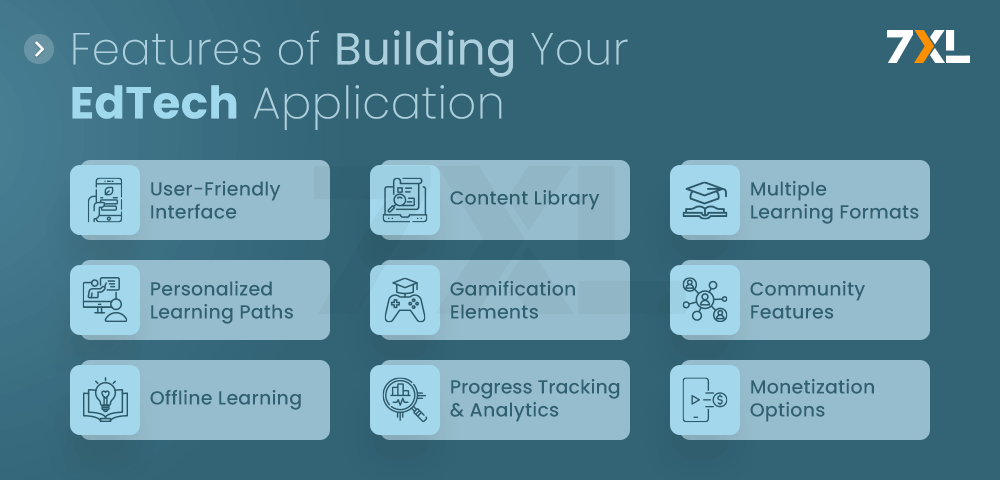
1. User-Friendly Interface
The first thing users notice is the interface. A clean, intuitive design helps users navigate the app easily. Prioritize simplicity and responsiveness, ensuring the app is accessible to everyone, including those with disabilities. User engagement is maintained & increased time spent studying is encouraged by simple navigation.
2. Content Library
A rich content library is a must. Provide a broad range of topics, including career growth, personal enrichment, and academic courses. Work together with academic institutions and business leaders to deliver top-notch, timely, and relevant content. Variety in topics keeps users coming back to explore more.
3. Multiple Learning Formats
Different learners have different preferences. Include various formats like video lectures for visual learners, audio lessons for those who prefer listening, eBooks for readers, quizzes for interactive learning, and simulations for practical application. Providing multiple formats ensures that all types of learners are catered to.
4. Personalized Learning Paths
Personalization enhances the learning experience. Use AI to recommend courses based on user interests and learning history. Track their progress and provide tailored feedback to help them improve. Personalization makes learning more relevant and engaging, increasing user satisfaction and retention.
5. Gamification Elements
Gamification infuses learning with a playful element. Incorporate features like badges for achievements, leaderboards for competitive spirit, and rewards for completing courses. Gamification motivates learners to engage more deeply and persist in their studies, making the learning process enjoyable and rewarding.
6. Community Features
Learning is more effective when it’s collaborative. Add discussion forums where learners can ask questions and share knowledge, live chat for real-time interaction, and peer-to-peer learning opportunities. Community features create a supportive environment that enhances the overall learning experience.
7. Offline Learning
Internet connectivity varies among users. Allow users to download and view content offline without requiring an internet connection to facilitate learning off-line. Making learning possible anywhere and at any time, this feature improves the convenience and use of your software.
8. Progress Tracking & Analytics
Users want to see their progress. Provide tools that allow learners to track their course completion, test scores, and overall performance. Detailed analytics help users understand their strengths and areas for improvement, motivating them to stay on track and achieve their learning goals.
9. Monetization Options
Effective app monetization is key to sustainability. Offering various pricing models, such as subscriptions, one-time purchases, and freemium options, gives users flexibility and boosts revenue potential. These foundational strategies can be expanded as you better understand the EdTech market and your target audience, allowing you to enhance your app’s value proposition further.
By prioritizing a user-centric approach, offering high-quality content, and fostering a dynamic learning environment, you can build a successful eLearning app that empowers learners, excites instructors, and disrupts the traditional education model.
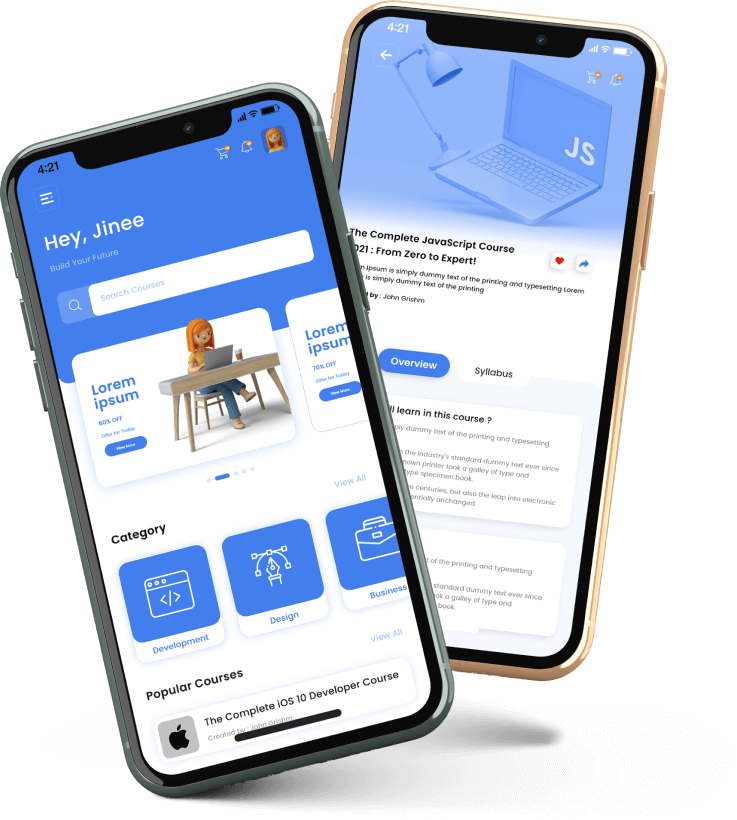
Planning to Develop an eLearning App?
Build your competing eLearning app with 7xcel- faster, easier,& with the features that keep learners engaged.
Steps to Build an eLearning App
Building an eLearning app requires careful planning and execution. From understanding your target audience to developing a robust platform and marketing it effectively, each step is crucial. Here’s a comprehensive guide to help you create a successful eLearning app that stands out in the competitive market. Following is the detailed look at each step:

1. Market Research and Planning
- Identify Your Target Audience: Understanding who your learners are is crucial. Are they school students, college students, working professionals, or hobbyists? Different groups have different needs and preferences.
- Analyze Competitors: Look at successful eLearning platforms like Coursera, Byju’s, Udemy, and Khan Academy. To uncover ways to stand out from the competition, evaluate their advantages and disadvantages.
- Define Your Unique Value Proposition: What makes your app different? Whether it’s exclusive content, advanced technology, or a unique teaching methodology, having a clear value proposition will set you apart from competitors.
- Create a Business Plan: Outline your goals, revenue model, budget, timeline, and marketing strategy. This plan will guide your project and help you stay focused on your objectives.
2. Design and Development
- Choose the Right Technology Stack: Decide whether to build a native app (specific to iOS or Android) or a hybrid app (compatible with multiple platforms). Choose technologies and frameworks that support scalability, security, and a smooth user experience.
- Design the User Interface (UI): Create an aesthetically pleasing and intuitive interface by collaborating with UI/UX designers. Focus on intuitive navigation, consistent design elements, and accessibility features.
- Develop the Backend: The backend is the backbone of your app. It handles user authentication, database management, content delivery, and more. Choose a robust and scalable backend technology to ensure smooth performance.
- Integrate a Learning Management System (LMS): An LMS is essential for managing course content, tracking progress, and facilitating communication between learners and educators. Ensure your LMS supports various content formats and interactive features.
3. Content Creation and Integration
- Collaborate with Experts: Partner with educators, industry experts, and content creators to develop high-quality, engaging content. Ascertain that the information is correct, current, and suitable for the needs of your students.
- Organize Content: Structure the content into well-defined courses, modules, and lessons. Use multimedia elements like videos, audio, and infographics to enhance understanding.
- Interactive Elements: Integrate quizzes, assignments, and discussion forums to make learning interactive and engaging. Use tools like H5P or Articulate Storyline to create interactive content.
- Content Management System (CMS): Use a CMS to upload, manage, and update your content efficiently. Ensure the CMS supports multiple languages and formats.
4. Testing and Launch
- Conduct Thorough Testing: Test the app for functionality, usability, performance, and security. To guarantee a positive user experience, find and address any faults or problems.
- Beta Testing: Release the app’s beta version to a limited user base. Gather feedback on their experience and make necessary improvements based on their input.
- Final Adjustments: Refine the app based on beta testing feedback. Ensure everything is working seamlessly before the official launch.
- App Store Optimization (ASO): Prepare for the launch by optimizing your app’s listing on app stores. Use relevant keywords, engaging descriptions, and attractive screenshots to improve visibility and attract downloads.
5. Marketing and User Acquisition
- Develop a Marketing Strategy: Create a comprehensive marketing plan that includes digital marketing, social media campaigns, content marketing, email marketing, and influencer partnerships.
- Develop a Website: To promote your software, offer details, and gather leads, make a polished website. Employ SEO recommended practices to increase your website’s organic traffic.
- Social Media Presence: Use social media to spread the word about your app, interact with users, and create a community. Share valuable content, run contests, and interact with users to increase visibility.
- Offer Free Trials and Discounts: Attract users by offering free trials, discounts, and referral programs. This allows potential users to experience your app’s value before committing to a purchase.
- Monitor & Analyze: Utilize analytics software to monitor user acquisition stats and your marketing campaigns. Analyze the data to identify what is and is not working, and then make any necessary plan modifications.
Following these thorough market guidelines will help you develop an eLearning software that satisfies user needs and stands out in the crowded market.
Partnering with an experienced IT service provider can further streamline the process, ensuring you create a high-quality, scalable, and user-friendly platform.
Beyond the Basics: Standing Out from the EdTech Crowd
While core features are essential for any eLearning app, true success hinges on differentiation. Partnering with a specialized eLearning App Development Company can ensure the inclusion of innovative features that set the app apart in the competitive EdTech marketplace.
Their expertise in integrating advanced technologies, such as AI-driven personalized learning paths, interactive content, and gamification, can make the platform more engaging and effective. Here’s how an eLearning app can stand out in the EdTech marketplace:
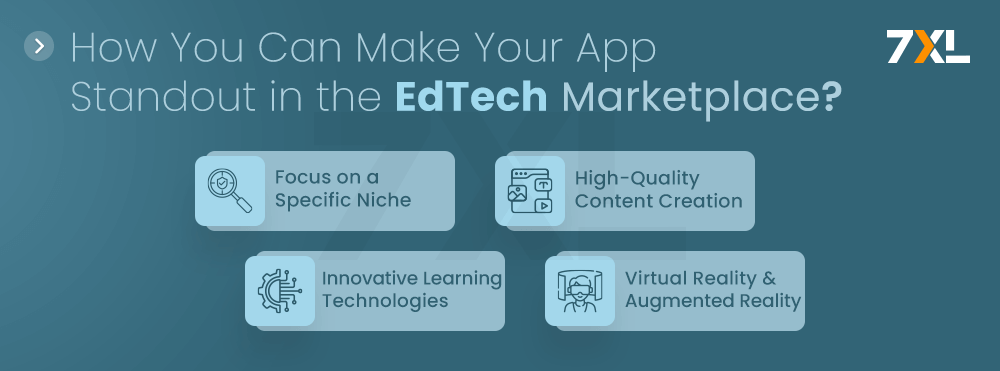
Focus on a Specific Niche:
Don’t try to be everything to everyone. Specialize in a particular subject area (e.g., data science, creative writing, foreign languages) or target a specific learner group (e.g., K-12 education, professional development courses).
High-Quality Content Creation:
Partner with subject matter experts and renowned instructors to develop engaging and informative content. Any effective eLearning platform is built on the foundation of high-quality content.
Innovative Learning Technologies:
Embrace cutting-edge technologies to enhance the learning experience. Integrate AI-powered features like personalized learning recommendations, adaptive learning paths based on individual performance, or chatbots that can answer learner queries and provide support.
Virtual Reality (VR) and Augmented Reality (AR):
These immersive technologies can add a whole new dimension to eLearning. VR can transport learners to historical sites, recreate scientific experiments, or offer 360-degree views of complex concepts. With the use of augmented reality (AR), students can interact with virtual items and see concepts more clearly by superimposing digital information over the actual world.
Ready to Revolutionize Education? Partner with 7xcel
The EdTech industry is brimming with potential for innovation and social impact.We can work with you to create a ground-breaking eLearning app because of our proficiency with educational technology, app development, and a thorough grasp of the eLearning market. We can build a platform that unites instructors, empowers students, and challenges the status quo in education so that everyone has access to top-notch instruction.
